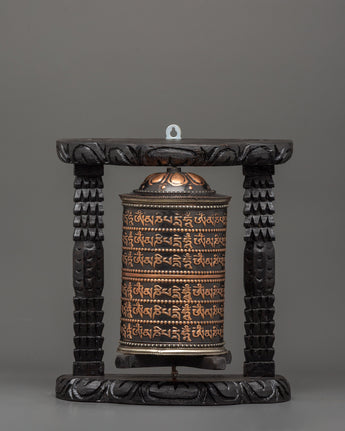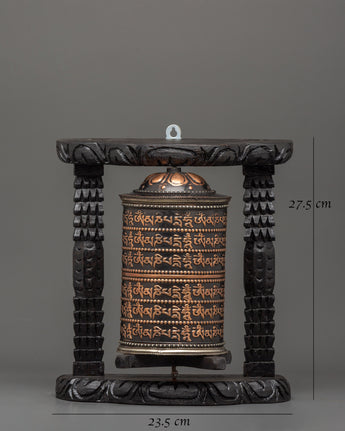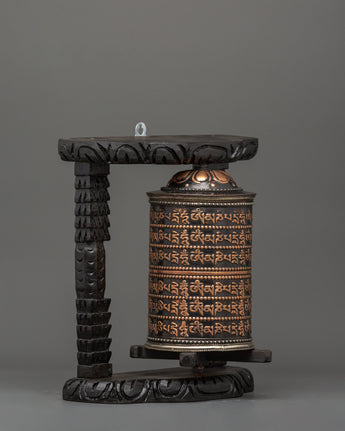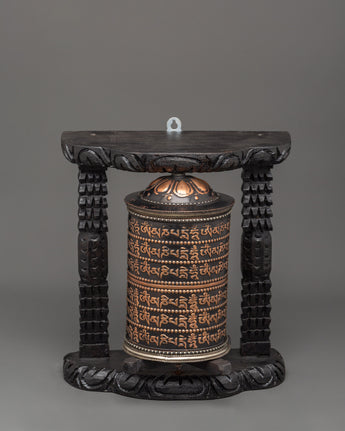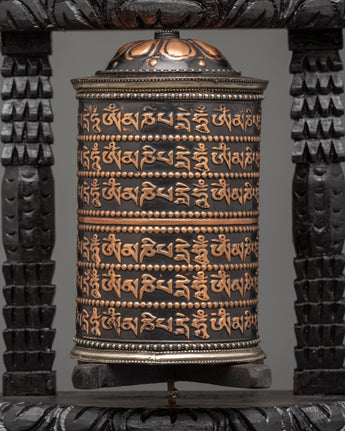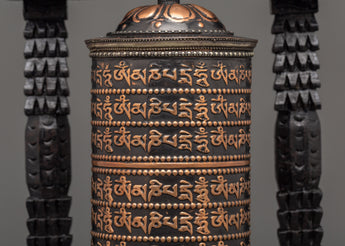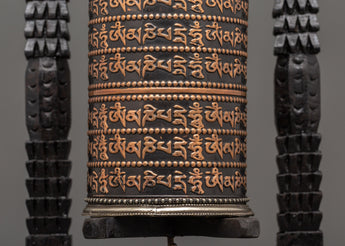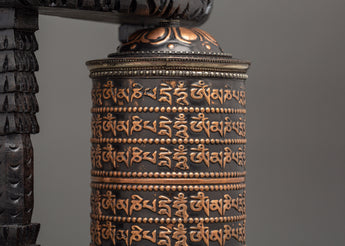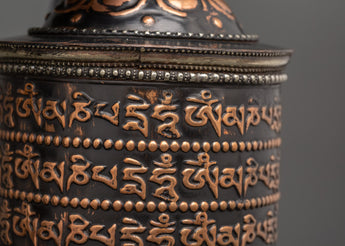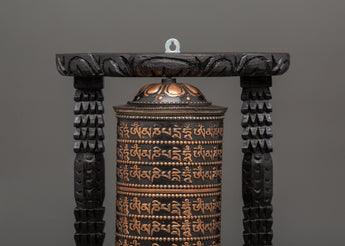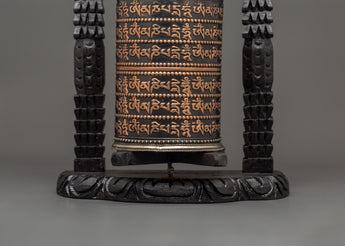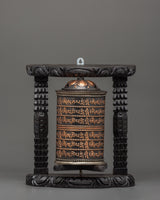
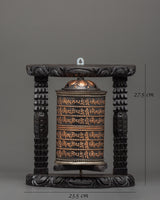
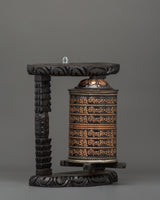
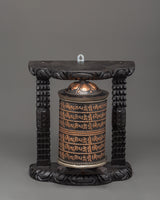
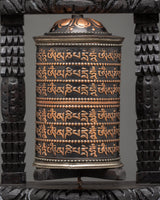
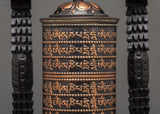
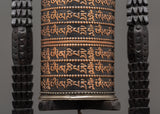
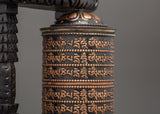
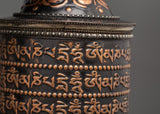
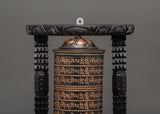
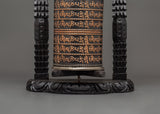
Prayer Wheel with Tibetan Mantras Carved | Meditation, Altar & Rituals Item
Prayer Wheel with Tibetan Mantras Carved | Meditation, Altar & Rituals Item
--------------------------------------------------------
Size: 27.5cm(Height) x 23.5cm(Width)
Weight: 0.77kg
Materials: Copper, Brass, Wood
--------------------------------------------------------
About our Prayer Wheel
This Tibetan Prayer Wheel, measuring 43cm tall and 36cm wide, is a sacred symbol of dedication and awareness. Crafted from copper and brass and framed in ornately carved wood, the wheel bears the "Om Mani Padme Hum" mantra in strong, flowing letters. Designed to be rotated clockwise, each spin brings blessings of compassion, tranquility, and protection. Allow the divine vibrations of each turn to instill peace and cultivate deeper spiritual awareness in your surroundings.
The wheel is securely fixed within a hand-carved wooden frame, representing stability and balance in spiritual practice. The metalwork is exquisitely detailed, featuring ancient themes and auspicious symbols, making this prayer wheel a powerful and artistically appealing piece. Its considerable size and sturdy construction provide stability and reverence, making it ideal for temple settings, home shrines, and meditation areas. The wheel is incorporated into everyday rituals as a meditation anchor, helping to focus the mind and generate positive karma. It serves as both a functioning ritual object and a symbol of the Dharma Wheel.
Introduction to Prayer Wheel
A prayer wheel is cylindrical on a spindle and is used in Tibetan Buddhism. It is typically inscribed with the mantra "Om Mani Padme Hum" and rotated by hand as a form of spiritual practice and to accumulate merit. Spinning the wheel is believed to have the same spiritual benefits as verbally reciting the mantra. The use of prayer wheels is widespread in Tibetan Buddhism and has spread to other cultures.
How does the Buddhist Prayer Wheel benefit us?
The benefits associated with rotating the wheel are numerous. It promotes knowledge, compassion, and bodhicitta in the practitioner and improves siddhis (spiritual powers such as clairvoyance, precognition, etc.). The practitioner can repeat the mantra as often as possible while the wheel is rolling, maintaining a calm, meditative attitude. A Tibetan Buddhist tradition holds that after a practice session, one should dedicate any acquired merits to the benefit of all sentient beings. Then three times Om Ah Hum. This is usually among Tibetans after finishing any Buddhist practice, including the prayer wheel exercise.
How do you set up your own Buddhist Shrine?
• Find a clean, quiet, and uncluttered spot
• Set up an altar table and cover it with an altar cloth that calls to you
• Place your sacred item at the center

